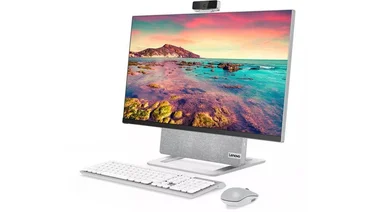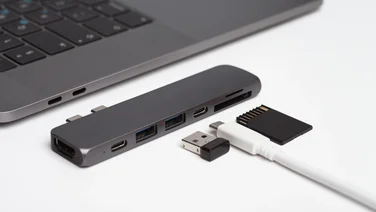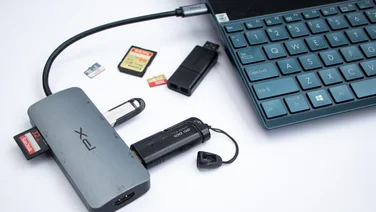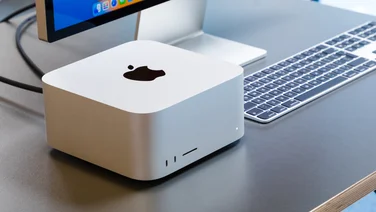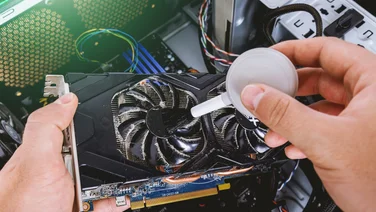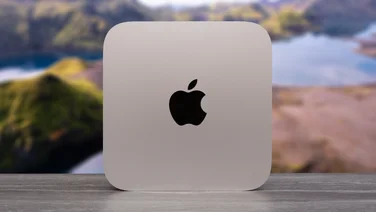To help us provide you with free impartial advice, we may earn a commission if you buy through links on our site. Learn more





The Raspberry Pi B+ is the latest incarnation of the Raspberry Pi Foundation’s tiny, cheap, low-power hobbyist computer. It’s an evolution from last year’s Raspberry Pi model B rather than an all-new Pi; its creators claim that it “isn’t a Raspberry Pi 2, but rather the final evolution of the original Raspberry Pi”.
To this end the B+ has the same 700MHz Broadcom processor as the previous model, and there’s still 512MB RAM on board. Despite this, the redesigned Pi uses less power than the previous model: we measured it as drawing 2.8W at idle and under load, while the previous model drew 3.1W and 3.8W. Hardly the kind of energy savings to avert climate change, but useful if you leave your Pi on all the time, as many do for embedded applications.

The main changes come in the design of the board. There are now four rather than two USB ports, so you can connect devices alongside a keyboard and mouse without needing a USB hub. The SD card slot has been replaced with microSD, and the composite video port has been merged with the 3.5mm jack plug port; to plug into a composite video device such as a CRT TV you’ll need an AV to composite adaptor cable, which should set you back around £6.50.
There are also four rather than two mounting holes, and the designers have increased the number of pins on the General-purpose input/output header from 26 to 40, giving you more flexibility to use the Pi to receive inputs and control other devices. The pin configuration is backwards-compatible with the previous Pi model, so you won’t have to change any pin assignments in programs you have written that use the GPIO.
The B+ setup process is almost identical to that of the B. You will, of course, now need a minimum of a 4GB microSD card instead of a full-size SD, but there’s hardly any cost difference between the two and most microSD cards come with an adaptor so you can use them in a normal SD card reader. You’ll also need a USB keyboard and mouse, a Micro USB phone charger for a power supply and an HDMI or composite display to plug the Pi into.

The Pi won’t do much without an operating system on the microSD card. This is meant to be easier to sort out than before, due to the new NOOBS operating system. Instead of downloading a Linux image and using a program such as Win32 Disk Imager to write this to an SD card, NOOBS is designed to be extracted straight to an SD card from a Zip file. You then boot into a menu, which lets you select from several different operating system environments to install.
Unfortunately, we couldn’t get NOOBS to work, even following the instructions given on the Raspberry Pi site to the letter – the Pi just wouldn’t boot. Instead, we resorted to the tried-and-tested method of using Win32 Disk Imager to write the image of our choice – in our case, Raspian – to the SD card, whereupon the Pi booted fine.
After this review was published, the programmer of NOOBS got in touch. It transpires that NOOBS doesn’t like SD cards formatted with the exFAT file system, instead requiring FAT32. However, Windows doesn’t let you format 64GB SD cards, such as the one we used for testing, as FAT32.
If you want to use a card this size, the solution is to use a utility to format the SD card as FAT32, before copying the NOOBS files over as per the instructions on the Raspberry Pi site. We found this worked fine, and NOOBS booted into a menu which would let us automatically install everything from Raspbian to Arch Linux to the XBMC Media Center, and even ARM’s own RISC OS. As we were using a big SD card, we installed every OS available, and were able to select from them at boot time. It’s a very versatile system.
One major problem we had during the setup process was that the microSD card slot lasted for three insertions and removals before a spring inside gave up the ghost and the card would no longer stay put. From then on we had to use sticky tape to hold the microSD card in place, which was effective if unsatisfactory. We found ourselves missing the full-size SD card slot of the previous Pi model, with its lack of moving parts to break.
Once Raspian was up and running, we ran a couple of Linux benchmarks to see if there were any differences between the model B and B+ in terms of processing power. Even though both use the same processor, we wondered if the improved power management had made a difference. We tested the Pi B+ versus the B using the Whetstone PiA6 benchmark. In this test, the Pi B+ consistently scored around 267 Million MWIPS (Millions of Whetstone Instructions Per Second), compared to 265 for the Pi. This is a tiny performance difference, but the fact that the B was consistently slightly slower makes us think the new model brings a slight performance increase.

The new USB ports certainly make a difference as to how useful the Pi is. If you want to transfer a file over from another computer with a USB drive, for example, you now no longer need to unplug your keyboard to do so. However, we encountered some problems. With an 850mA USB power supply (as supplied with many phones), whenever we plugged in a USB flash drive, it would knock out the mouse, which wouldn’t work until we unplugged it and plugged it in again. This problem was solved by swapping the power supply for a more powerful 2A model, as supplied with many tablets.
However, despite claims that the Pi B+ will support external hard disks, we found it couldn’t provide enough power for any of our 2.5in bus-powered test models, even with the 2A power supply. Changing the Pi’s config.txt file to provide maximum power over the USB ports didn’t help, either. A 1.8in Toshiba portable disk would work, but we recommend using an external hard drive with an external power supply or USB flash drives to transfer files to the Pi.
If you want a hobbyist computer to use for anything from elementary programming with Scratch and Python to embedded applications such as making a Wi-Fi doorbell, the Raspberry Pi remains a fantastic way to spend £27. The new model is certainly an improvement overall, but we discovered some problems with USB power delivery and we hope our short-lived microSD card slot isn’t indicative of a wider design fault. Nonetheless, the B+ is the same price as the old model, but has a neater design and has greater hobby potential due to the larger GPIO header, so retains its five-star rating.

